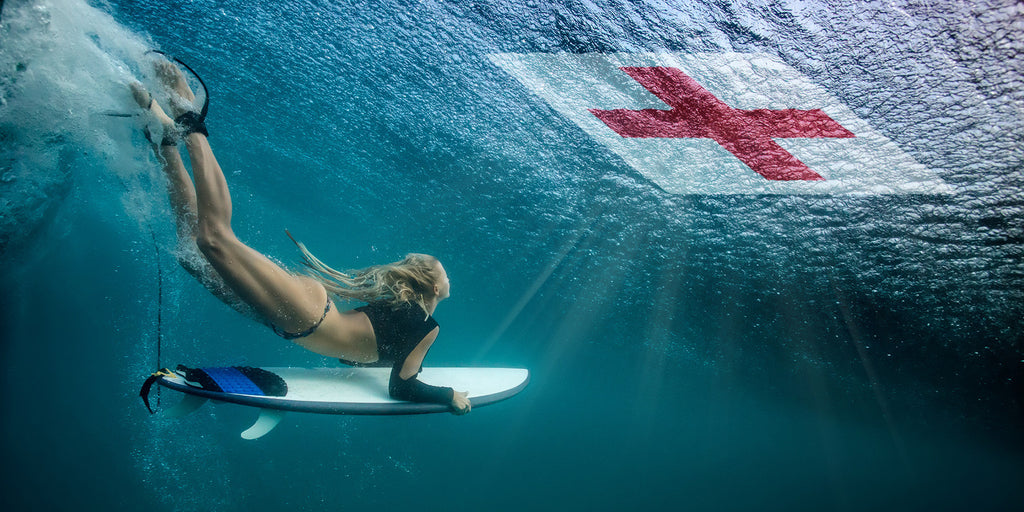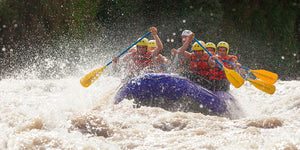What Belongs In A Watersports First Aid Kit?

A standard first aid kit is fine for most minor emergencies on land, but a standard kit isn't equipped to handle some of the most common water sports injuries. Whether you dive, surf, fish, snorkel, kayak or sail, there are some additional first aid items you don't want to be without when you head to the water.
CPR Mask
Drowning is an ever-present risk in water sports, so CPR training and a CPR mask are both essential to first aid readiness. The benefits of CPR training are obvious, and the mask ensures you're ready to administer emergency breathing without fear of skin-to-skin contact or contamination.
Lidocaine Spray
Stings from aquatic creatures are another common concern for divers, snorkelers and swimmers, but the correct treatment for different types of stings varies and what provides relief from one type of sting can actually worsen another.
The only surefire, instant pain relief for minor stings from every type of aquatic creature or water-borne insect is lidocaine spray. Once the victim is more comfortable, you can use a plastic credit or ID card to gently scrape any remaining tentacles, spines or stingers off and out of the skin. Seek professional medical help immediately if the affected area is large, if there's painful swelling or discoloration of the affected area, or if the victim shows signs of shock or breathing distress.
Of course, it's better to prevent these types of painful injuries in the first place if at all possible. Keep a bottle of SafeSea Sting Prevention Lotion or Sunblock on hand for your outings, and apply it before entering the water to ward off stings from jellyfish, fire coral and similar invertebrate creatures.
Magnifying Glass, Tin Snips & Alligator Nose Pliers
Another risk faced almost exclusively by water sports enthusiasts is stray fish hooks. Whether you step on one, swim into one, or have one accidentally cast your way, these barbed terrors are nearly impossible to safely remove without the proper equipment. A deeply-embedded hook, or a hook that's embedded near major arteries or delicate structures like the eye should be left to the medical professionals, but a shallow puncture to a fingertip, leg or toe can be easily removed with a few basic supplies.
First, rinse the area with fresh water to remove any dirt or other contaminants that might enter the wound. Use the alligator nose pliers to securely grip the hook on its straight, non-barbed end. Cut off any exposed barbs at the other end with the tin snips, using the magnifying glass if necessary. If all barbs are gone and the remaining hook piece is near the surface of the skin, carefully pull it out, moving the pliers in a curve as needed to remove the hook without causing further tissue damage.
If the remaining piece is still deeply embedded, if multiple curved pieces remain at one end (making it impossible to easily slide the hook out from under the skin), if any barbs remain or if the ends of the remaining piece have both slipped beneath the skin, seek professional medical help immediately.
No matter what, the victim will want to consult a doctor regarding the necessity for a tetanus shot following a fish hook injury.
Sunburn Relief
Sunburn is a risk for anyone enjoying the great outdoors, but the risk is even greater when you head to the beach, lake or pool.
First, the sun's harmful UV rays can penetrate water; even at a depth of one meter (approximately 3.3 feet), 40% of the UV rays come through. In addition, the cooling effect of the water can be misleading, causing many not to realize they've been burned until after they exit the water and the damage is done.
Be prepared with sunburn relief gel or spray, ideally one that contains both lidocaine and a soothing, cooling additive like aloe.
Eye Wash
Tiny bits of sand, shell, fish scales, plant matter and other impurities are immersed in the water of oceans and lakes. Even if you take the precaution of wearing a dive mask, water can drip down from the mask into your eyes as you pull the mask off your face or head.
A single particle of grit can cause pain, corneal scratches or worse, so it's imperative to keep a squeeze bottle of artificial tears or eye wash in your kit. In a pinch a bottle of purified water, gently poured out over the open eye as the standing victim bends over, can do the trick as well.
If a rinse isn't adequate to remove all detritus, or if the victim complains of continued pain or vision disturbance, seek professional medical attention immediately.
With just a few simple additions, you can turn any standard first aid kit into a water sports first aid kit.
- Watersports Staff






Comments 0